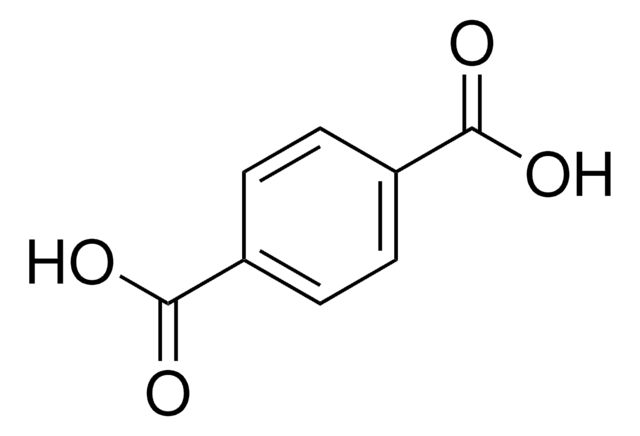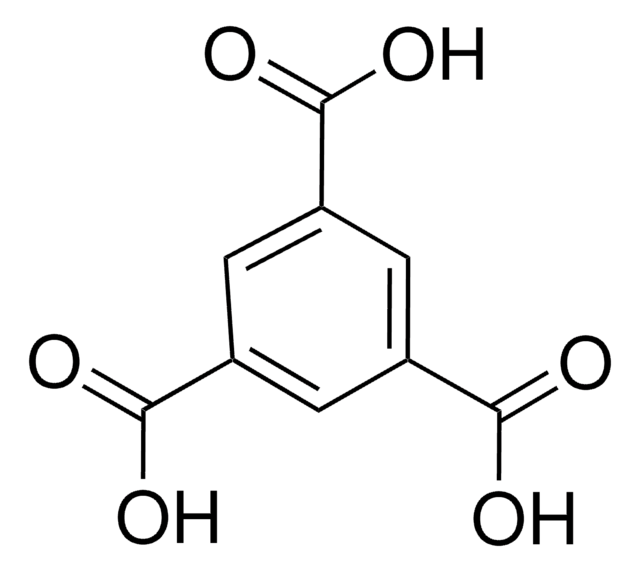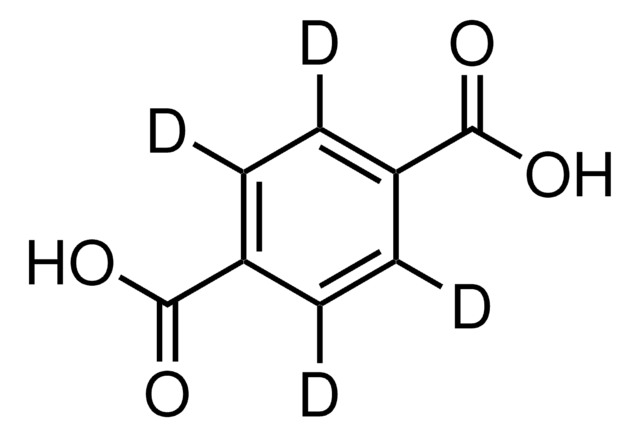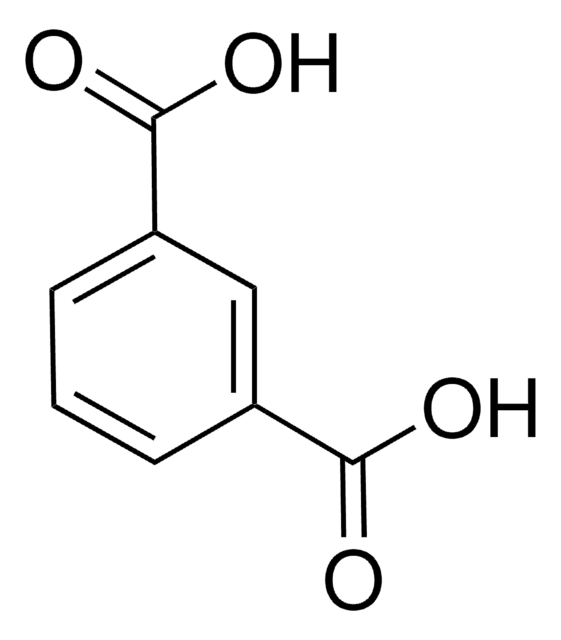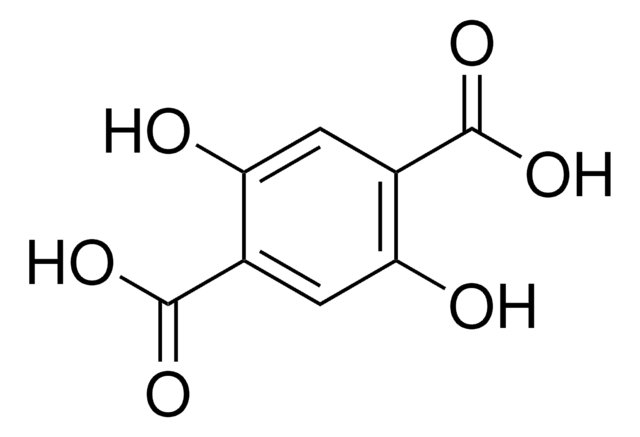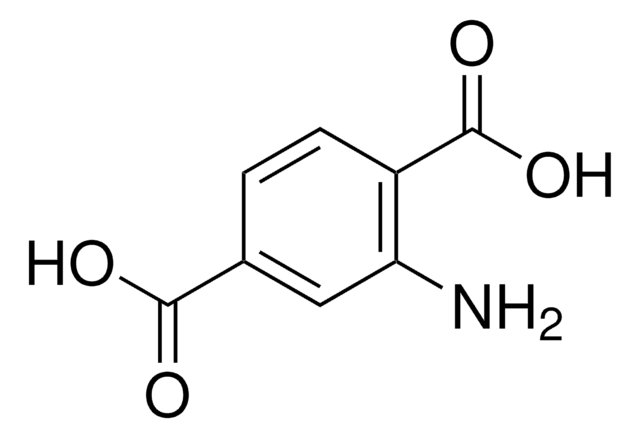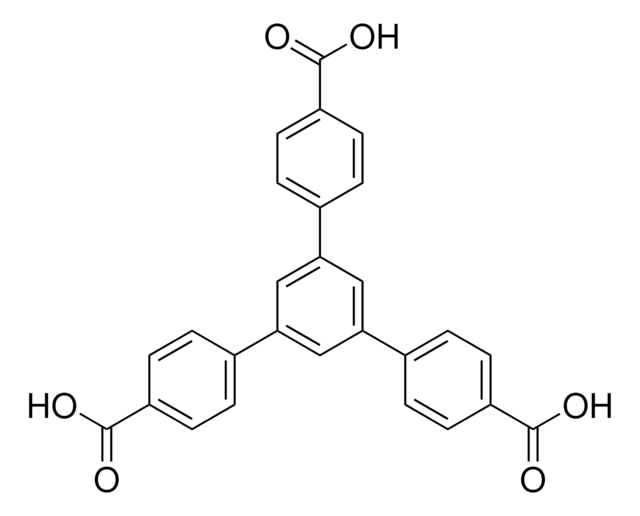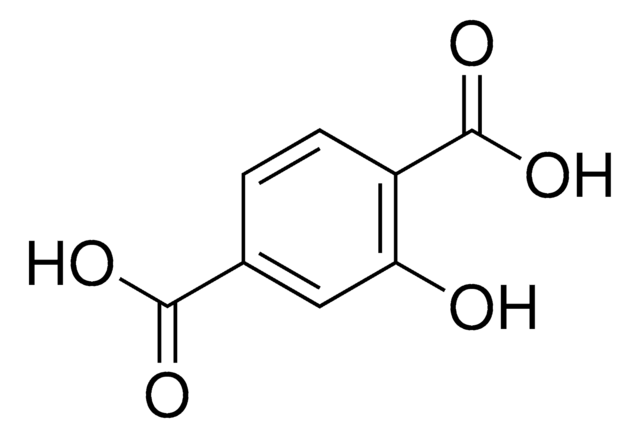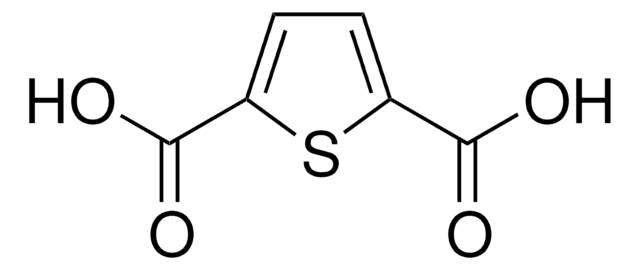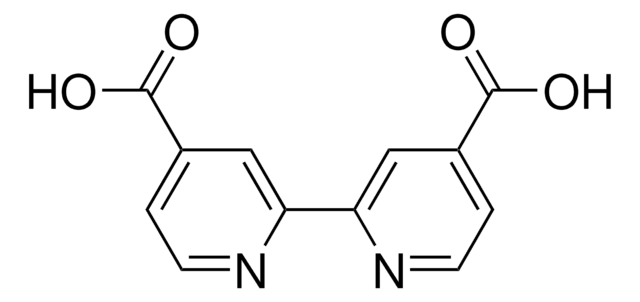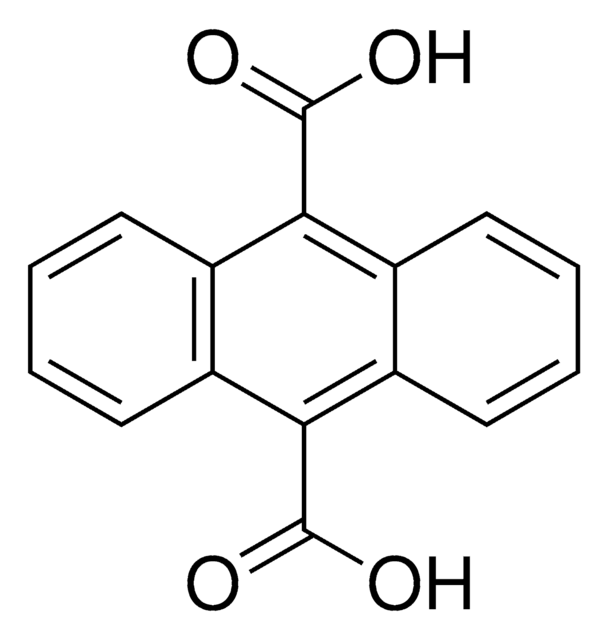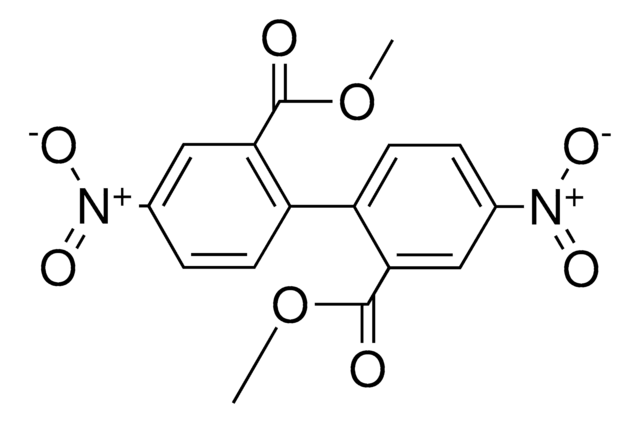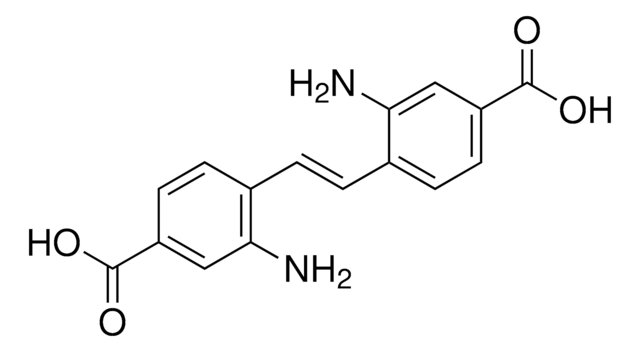225266
Biphenyl-4,4′-dicarboxylic acid
97%
Sinonimo/i:
4-(4-propan-2-yloxycarbonylphenyl)benzoic Acid
About This Item
Prodotti consigliati
Livello qualitativo
Saggio
97%
Punto di fusione
>300 °C (lit.)
Stringa SMILE
OC(=O)c1ccc(cc1)-c2ccc(cc2)C(O)=O
InChI
1S/C14H10O4/c15-13(16)11-5-1-9(2-6-11)10-3-7-12(8-4-10)14(17)18/h1-8H,(H,15,16)(H,17,18)
NEQFBGHQPUXOFH-UHFFFAOYSA-N
Cerchi prodotti simili? Visita Guida al confronto tra prodotti
Categorie correlate
Descrizione generale
Applicazioni
- As a key component In the synthesis of nematic aromatic polyesters which are valuable in the development of liquid crystal polymers with potential applications in electronics, optical devices automotive, and textiles.
- As a linker or ligand in the synthesis of metal-organic frameworks (MOFs) for a wide range of potential applications in areas such as gas storage, catalysis, sensing, and separation technology.
- As a building block in biomedical applications for the synthesis of various pharmaceutical compounds and materials with biological activity. It can also be utilized in the development of drug delivery systems and biomaterials due to its chemical properties.
Avvertenze
Warning
Indicazioni di pericolo
Consigli di prudenza
Classi di pericolo
Eye Irrit. 2 - Skin Irrit. 2 - STOT SE 3
Organi bersaglio
Respiratory system
Codice della classe di stoccaggio
11 - Combustible Solids
Classe di pericolosità dell'acqua (WGK)
WGK 3
Punto d’infiammabilità (°F)
Not applicable
Punto d’infiammabilità (°C)
Not applicable
Dispositivi di protezione individuale
dust mask type N95 (US), Eyeshields, Gloves
Scegli una delle versioni più recenti:
Possiedi già questo prodotto?
I documenti relativi ai prodotti acquistati recentemente sono disponibili nell’Archivio dei documenti.
I clienti hanno visto anche
Il team dei nostri ricercatori vanta grande esperienza in tutte le aree della ricerca quali Life Science, scienza dei materiali, sintesi chimica, cromatografia, discipline analitiche, ecc..
Contatta l'Assistenza Tecnica.